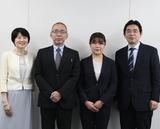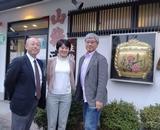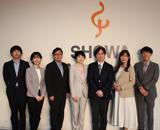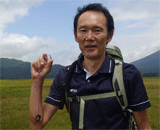March 2024
Revival of a 1,300-Year-Old Recipe: The Global Strategy for Japanese Sake that Transcends Categories
The B2C Appeal That Awakens the Instincts of a Tradesperson
Ohsato: Were you drawn by the appeal of a B2C business, which is different from the B2B nature of your main company?
Yoshinao Kurita: In the machinery world, everything runs according to the blueprint and can be made 100% predictable, but the same doesn't apply to Japanese sake. Since it's an indulgence, there isn't a formula that spells out what we need to do to make them sell. In addition, when we sell a machine, even a low-priced one, it brings in some 20 million yen and we also produce continuous revenue from maintenance. In contrast, selling Japanese sake is like stacking one flimsy sheet of paper on top of another. Even when we feel like we've sold a solid amount, when we take a good look at what we made, the stack of paper is still so thin we can pinch it between our fingers. It's tough and frustrating, but there's also a lot of freedom. We can sell to whoever we want and make sake however we want. That's a freedom we don't get to enjoy with machines. And above all else, it's fun. For example, when we go to events and people buy our sake and say it tastes delicious, it makes me so happy I want to go tell everyone at the brewery right away. I think it's the human instincts of a tradesperson.
Yasuhiro Kurita: B2B is a logical world, whereas B2C is an emotional one. Since we're closer to the consumers, we can feel their reactions more directly and vividly. Also, Kurita Machinery's filters hold top market shares in Japan and there are few competing manufacturers in the first place. In contrast, there are apparently 1,300 sake breweries in the country. With 1,300 rivals, we'd get buried if we only made an average effort. This feeling of being on the brink was fresh and stimulating.
Reviving the Sake Brewing Procedure of the Nara Period
10% Polishing, Food Rice and a Single-Stage Brewing Process: Prince Nagaya, the Unconventional Sake
Ohsato: So, Prince Nagaya was born out of an effort to differentiate from other rivals?
Yoshinao Kurita: The Prince Nagaya sake itself already existed and was left to us by the previous owner. But no one was paying particular attention to it. Prince Nagaya, the historical figure, was the grandson of Emperor Tenmu and Emperor Tenji. He was a highly competent statesman with the potential of succeeding the imperial throne, and for this reason, the Fujiwara Clan saw him as a threat. He was accused of plotting to overturn the government and forced to commit suicide. He was, so to speak, a tragic prince. In the 1980s, Sogo was planning to build a department store in Nara City, but while the construction crew was digging, they unearthed thousands of wooden tablets called "mokkan." It turns out it was the site of Prince Nagaya's mansion. Among the mokkan tablets were records of sake brewing methods, which Nakamoto Sake Brewery revived to create the original Prince Nagaya sake.
Ohsato: The excavated recipe described the sake brewing methods of the Nara Period. How exactly does it differ from the modern method?
Yoshinao Kurita: There are three differences. The first is that only the outer 10% of the rice grain is polished, so it's virtually brown rice. The second is that regular food rice is used, because special strains of rice developed specifically for sake didn't exist back then. The third is that the brewing process only has one stage.
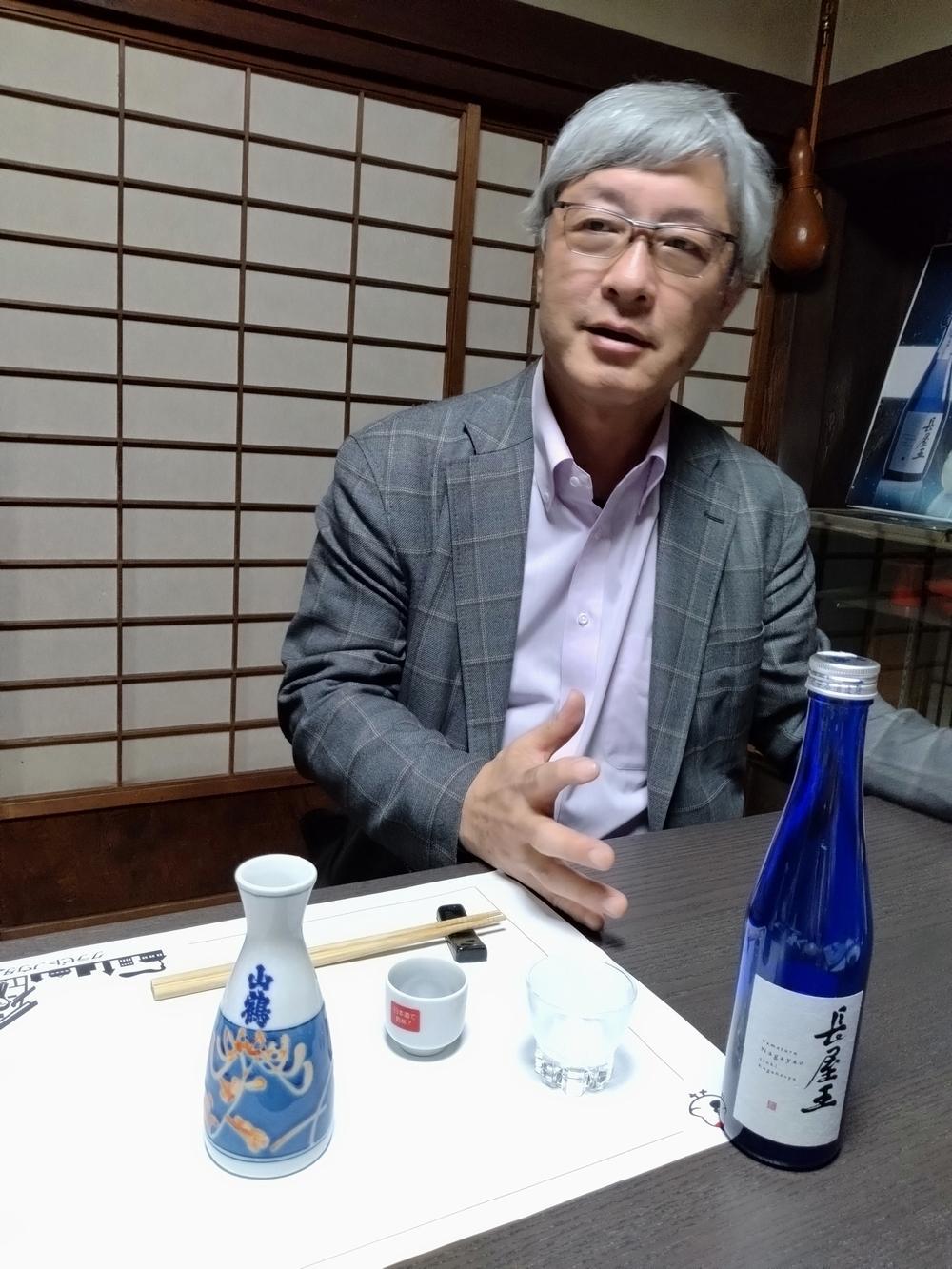
Yasuhiro Kurita: As you probably already know, the degree of rice polishing determines sake classification such as ginjo and daiginjo. Regulations state that to be classified as a ginjo, at least 40% of the rice grain has to be polished, and at least 50% for daiginjo. Removing the outer layers of rice reduces zatsumi (unwanted off-flavors) and gives the sake a clear taste. But the people of the Nara Period didn't have rice polishing techniques, so they used to make sake using what was virtually brown rice. In addition, the modern method of brewing sake generally involves a three-stage process where steamed rice, koji (fermented rice), water and shubo (fermentation starter) are added to the tank in three separate stages. This prevents bacteria growth and allows brewers to produce sake of a consistent quality. Using a single-stage brewing process creates risks for us producers, but we're committed to recreating the Nara Period brewing method.
Yoshinao Kurita: In other words, it can be said that Prince Nagaya sits on the polar opposite of the brewing methods that were refined over the years to make sake taste better.
"It's like Sauternes Wine"
A Chef's Comment Becomes a Hint for Global Expansion
Ohsato: So, Yasuhiro, as a marketing professional, you thought this was the key to your differentiation strategy?
Yasuhiro Kurita: Actually, no. When I first started helping out, I didn't even try tasting Prince Nagaya for a while because the owner said they made the sake without taking its taste into consideration. A friend of mine introduced us to a restaurant that offers original dishes paired with Japanese sake, and we provided three types of sake: a junmai daiginjo, a dry-flavored junmai ginjo and Prince Nagaya. The chef took particular interest in Prince Nagaya and said there is no other sake like it. On a different occasion, a Michelin star chef said it's like Sauternes wine. That's when I thought: this is it.
Ohsato: Sauternes is a very sweet botrytized wine from France, right?
Yasuhiro Kurita: Yes, it's a very sweet wine that's often enjoyed as a dessert wine. Prince Nagaya is not at all like conventional Japanese sake, which pursue a refined, dry taste. Since its brewing method is the exact opposite, its taste is the exact opposite as well.
Yoshinao Kurita: When it comes to Prince Nagaya, many people are surprised by how delicious it tastes even though the rice is only 10% polished. The layers that used to be removed because they cause zatsumi, were in fact, the source of umami (deliciousness).
Yasuhiro Kurita: Being told that Prince Nagaya was like Sauternes wine was a big hint. When we entered a Japanese sake competition in France, we won the Platinum Award. This got us thinking that maybe Prince Nagaya will sell better in countries outside of Japan, so with support from JETRO, we reached out to talk to US and French importers. Since people in Europe and the US don't have fixed preconceptions about what makes an "ideal sake," they assess it based solely on its taste. We believed that would work in our favor. And indeed, when we took part in last year's SAKE DAY in San Fransisco, the largest and longest-running Japanese sake event outside of Japan, Prince Nagaya was extremely well received and even purchased by a Michelin star restaurant. We also exhibited the sake at Anuga (which is an international trade fair for food and beverages held at a massive exhibition center called Koelnmesse in Germany), around 90% of the buyers who tasted Prince Nagaya said it was delicious. The buyers came from all over the world and we noted down the countries, which included Argentina, Ukraine, Thailand, Brazil, Nigeria, Saudi Arabia, Turkey and more. That practically covers all the regions of the world, from Europe and the US to Asia, the Middle East and Africa. On a different occasion, we made sales visits to restaurants in Paris, France, together with our importer, and out of the nine restaurants we visited, five of them ordered Prince Nagaya on the spot.
Ohsato: That's amazing! Differentiation is the first step to marketing, and in that sense, it sounds like a gemstone was sleeping in the brewery.
Conquering the World with Prince Nagaya as a Sake that Transcends Categories
Yasuhiro Kurita: When the owner first decided to brew Prince Nagaya, he jokingly said, "Let's make a 'bad-tasting sake' just for the hype." With 1,300 breweries in the country, it's difficult to stand out by taking part in conventional competition with junmai daiginjo products, no matter how good they taste. In addition, most regular consumers in Japan who enjoy sake say that Prince Nagaya is too sweet. Since it received high praise from Italian and French cuisine chefs, we decided to compete by stepping outside the Japanese sake category. People who drink sake overseas have broad tastes and minds to begin with, so if something tastes delicious, they recognize it as delicious and praise it for its one-of-a-kind uniqueness.
Ohsato: So your belief that Prince Nagaya would be more fairly assessed overseas, free from all the preconceptions of "sake" in Japan, led to developing a global strategy in earnest.
Yasuhiro Kurita: We truly believe that we can conquer the world and come out on top with Prince Nagaya. Unique restaurants in Japan are starting to offer it as well, and it's being well received by food connoisseurs.
Sharing the Singular Story and Taste of Prince Nagaya with the World
Ohsato: Releasing information in English is essential to expanding internationally, and we were honored to support the launch of the English website for Prince Nagaya.
Yoshinao Kurita: Thank you very much. You started from scratch and made it into a very stylish site.
Yasuhiro Kurita: We were very impressed with the high quality of the translation. Our aim for creating this website was to promote Prince Nagaya's taste and the story of reviving a 1,300-year-old recipe, as well as to highlight its one-of-a-kind uniqueness. We feel that the website's design and structure reflect our aspiration to present Prince Nagaya as a Japanese sake unlike any other. It provides a simple introduction for people who learn about Prince Nagaya for the first time by visiting the website, as well as more detailed content that stirs even greater interest in people who want to learn more about the sake.
Yoshinao Kurita: The possibilities are endless and full of excitement and adventure. We hope to have fun engaging in open ideas and taking on various challenges. We're already planning our next challenge, which is to use an earthenware pot for the brewing process. Since the people of 1,300 years ago likely used earthenware pots instead of tanks, we ordered the production of a Shigaraki pot. We're also planning to try brewing Prince Nagaya using an artwork crafted by the world-famous ceramic artist Shozo Michikawa.
Yasuhiro Kurita: Our rivals aren't other Japanese sake or the 1,300 breweries in the country. More and more, restaurants around the world are offering courses that pair dishes with different glasses of wine. We want Prince Nagaya to be chosen as one of them. Our aim is to establish a one-and-only brand that strives to delight first-class chefs and epicureans all across the world.
Ohsato: I think the fact that you both came from different fields allowed you to create something completely new that isn't bound by the conventions of Japanese sake. I also see similarities between how the two of you are leveraging each of your unique skills to take Prince Nagaya to the world, and how your fathers leveraged their professions and knowledge as experts in machinery and marketing to build up Kurita Machinery. I was moved by the family bond that brings you together as a united team when the occasion calls for it, even though you both walk different paths. Thank you very much for your time today.
-------------------------
Need help with a translation or interpreting project? Feel free to contact us here.
Arc Communications
Feature Interview Index


